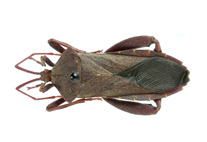Abstract
A new species, Eostyloceros hezhengensis sp. nov., is established based on a skull with its cranial appendages collected from the Late Miocene Liushu Formation of the Linxia Basin in Gansu Province, northwestern China. It is a large-sized muntjak with a distinct longitudinal ridge along the lateral margin of the frontal bone that joins the antler pedicle. The pedicle is short, cylindrical, robust, and extends posteriorly from the rear of the orbit. The anterior and posterior branches arise from the burr and diverge at an angle of 30°. The posterior branch is relatively long, and its tip is strongly curved posteriorly. The anterior branch is straight and situated anteromedially from the posterior branch. The posterior branch is lateromedially compressed, and the anterior branch has a circular cross section. The morphological observation together with a cladistic and a principal component analysis indicate that E. hezhengensis is more basal than any known species of the genus Eostyloceros in having shorter pedicles, a lower position of the fork above the burr, more slender anterior branches, and a small angle between the anterior and posterior branches. Its age is the middle Late Miocene, corresponding to the late Bahean.

